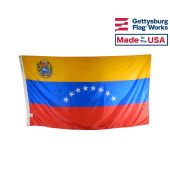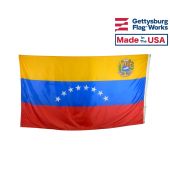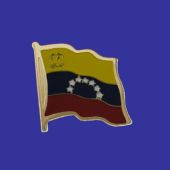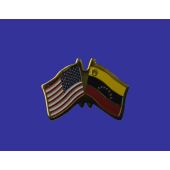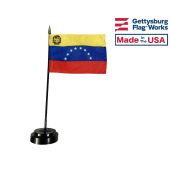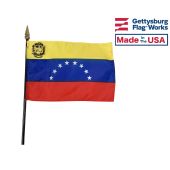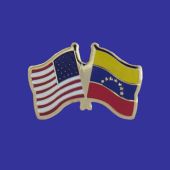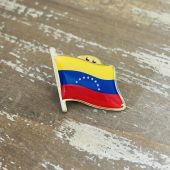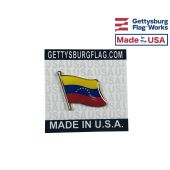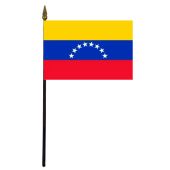Flag of Venezuela
Flag of Venezuela
The modern flag of Venezuela is one of the youngest flags in the world, but there have been several other flags of Venezuela that have represented the nation since it first won its independence. The modern flag is very similar to the older designs, which date back to the independence movements that flourished in the Spanish colonies during the 19th century.
The current flag of Venezuela was introduced in 2006. The basic design includes a horizontal tricolor of yellow, blue, and red, dating to the original flag introduced in 1811, in the Venezuelan War of Independence. Further modifications have involved including a set of stars, multiple changes to the placement and number of stars and inclusion of an optional coat of arms at the upper-left corner.
- Capital of Venezuela: Caracas
- Area of Venezuela: 882,050 sq. km
- Languages used in Venezuela: Spanish (official), many indigenous dialects
- Religions in Venezuela: Roman Catholic, Protestant
Colors and Symbolism of the Flag of Venezuela
The flag of Venezuela is a horizontal triband of yellow, blue, and red that features an arch of eight white stars in the center. The stars represent the provinces that make up Venezuela. There are several common interpretations of the flag's colors, but the dominant interpretation states that the yellow band represents the gold of the Venezuelan land, the blue band represents the sea, and the red band represents the blood that was spilled during the nation's war for independence.
History of Venezuela Flags
All flags of Venezuela can trace their ancestry back to the banner of Francisco de Miranda, one of the earliest revolutionary leaders in the Spanish Americas. Miranda's flag was the inspiration for several other flags, which still bear a strong resemblance to the flag of Venezuela. Miranda gave two explanations for the origin of his flag's design. A personal letter that he sent to a friend says that the flag was inspired by a conversation that he had with a German intellectual called Goethe. Goethe explained his theory of primary colors and told Miranda that his destiny was to bring such a flag to the Spanish colonies. Miranda's personal journal tells a different story. It says that he was inspired by the sight of a military unit in Hamburg when he was visiting the city. In either case, the flag's colors had been chosen by 1801, which was several years before it was first used.
Miranda's design formed the core of the Venezuelan flag, but it did not go unchanged. Venezuela added stars to represent the nation's provinces, and the arrangement of those stars changed several times over the course of the nation's history. Some of the designs also included the nation's coat of arms, which is authorized for use on the modern flag but is not mandated. The most recent change occurred in 2006, when Venezuela replaced a circle of stars with the arch of stars that appears on the current design.
